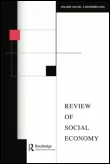- | Academic & Student Programs Academic & Student Programs
- | Journal Articles Journal Articles
- |
Post-Disaster Community Recovery in Heterogeneous, Loosely-Connected Communities
Originally published in Review of Social Economy
Hurricane Katrina hit the Gulf Coast on 29 August 2005, leaving a great deal of destruction, pain, and uncertainty in its wake. Post-disaster community rebound is a collective action problem where every individual’s decision to rebuild is impacted by the likelihood that others in the community will rebuild.

Hurricane Katrina hit the Gulf Coast on 29 August 2005, leaving a great deal of destruction, pain, and uncertainty in its wake. Post-disaster community rebound is a collective action problem where every individual’s decision to rebuild is impacted by the likelihood that others in the community will rebuild. The literature on post-disaster recovery suggests that homogenous, tight-knit communities will have an advantage over more diverse, less connected communities in solving this collective action problem and bringing about community rebound and redevelopment. Consequently, these studies have tended to underappreciate the capacity of loosely knit, heterogeneous communities to overcome the challenges associated with community recovery after a disaster. This article hopes to fill this gap in the literature by examining how loosely knit, heterogeneous communities can facilitate post-disaster community recovery and redevelopment. To examine this, we highlight the importance of community-based organizations and focus on the recovery efforts of Broadmoor after Hurricane Katrina.
Read the full article at SSRN or Taylor & Francis Online.
To speak with a scholar or learn more on this topic, visit our contact page.

